Tapped my cask of dark mild today. It is quite lovely.




Can I please have one?Tapped my cask of dark mild today. It is quite lovely.
View attachment 715569
Tapped my cask of dark mild today. It is quite lovely.
View attachment 715569
I'm making a test batch of invert #3 right now (oven method). If it works, it's going into a 100% Golden Promise 1.045 beer to test the flavor contribution. If I'm happy with it, I may try some in the next dark mild.





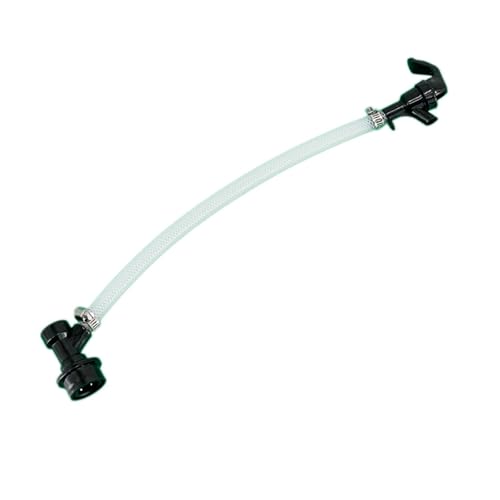




This post is about the results of my 5 gallon test batch, where I added 1 pound of homemade #3 (Turbinado sugar) to a simple Golden Promise ale. Off topic somewhat from dark mild.
The invert I used was from my earlier attempt using turbinado sugar. As per my above post, it's lighter and less complex than my most recent batch of invert #3 made from the Mexican store piloncillo. Here's the recipe:
GP BITTER WITH INVERT #3
Predicted stats: 1.055 - 1.015, 5.2% ABV, 30 IBU
85.5% Golden Promise
9.5% Invert #3
5% White wheat
Bittering @ 60 (20 IBU)
EKG @ 15 (9 IBU)
Willamette @ 2 (1 IBU)
WY 1469 West Yorks
I just pulled the gravity sample and it tastes good but the predictions are off in two areas:
1) The colour is paler than the calculator predicted, but I expected this. The invert clearly added some colour but the beer is golden rather than amber. I wonder if my darker piloncillo invert #3 will add more colour.
2) The final gravity is considerably lower than expected, which puzzles me. With my 155F mash and WY 1469, I expected ~69% attenuation, or 1.055 - 1.017. The actual FG is 1.007 or 86% attenuation! There's a chance I may have screwed up the reading and will take a second sample before kegging this afternoon.
I'm very curious about the homemade invert sugar. Just yesterday I bottled a bitter made with the same yeast, but a dash of Crisp Crystal (150 EBC) in lieu of any invert sugar. I regret not going the extra mile and making some invert sugar.
Can you give a brief description of your process and of the resulting product?
Thanks a lot!
(By the way: I was also surprised to see 80% apparent attenuation with an all-malt wort and WY 1469.)
More complicated than that, as always. Especially as Tim Taylor's Dark Mild is just Golden Best with caramel added at racking time.Ron Pattinson in his Vintage Beer book says that mild (which in the 19th century was always pale) "continued to darken throughout the interwar period, and most examples were either dark amber or brown in color. In some regions, for example the northwest of England, breweries had an ordinary mild that was dark and a best mild that was pale."
I see that Timothy Taylor says that Golden Best is the "last of the true Pennine light milds."
So is Pennine mild basically pale best mild? Or is there something more than that?
That can be a lot of beer for the US, Samuel Smith has a large amount at Bevmo and Total Wine. No Timothy Taylor though. Bummer.
I don't mean to pick nits, but Gordon's reconmnendation of Wyeast 1469 (West Yorkshire Ale) or White Labs WLP037 (Yorkshire Square Ale) or Lallemand Windsor Ale yeast has me scratching my head. These 3 yeasts produce wildly different tastes. In my humble opinion, W Yorkie is pretty nice but I am so not a fan of Yorkie Squares or Windsor.
Ha ha, that's a really obvious observation that I hadn't made the connection on.I think you'll find that's pretty typical of how yeast recommendations work. Look up Jamil's list - see that he says 1469 is from TT so that's the first recommendation. Then get the closest from the White Labs list for people who can't get Wyeast - ah, WLP037 mentions Yorkshire, that must be close. And then something for the people who can only get dry yeast - well there aren't too many options, Windsor has a bit more character than most so we'll suggest that.
I'm making a test batch of invert #3 right now (oven method). If it works, it's going into a 100% Golden Promise 1.045 beer to test the flavor contribution. If I'm happy with it, I may try some in the next dark mild.
Results of my Golden Peomise and invert #3 experiment. Not much in the way of colour contribution.
How much invert #3 did you use?
I bought a pound of Becker's #3, and that stuff is dark. SRM = 50
How much invert #3 did you use?
I bought a pound of Becker's #3, and that stuff is dark. SRM = 50
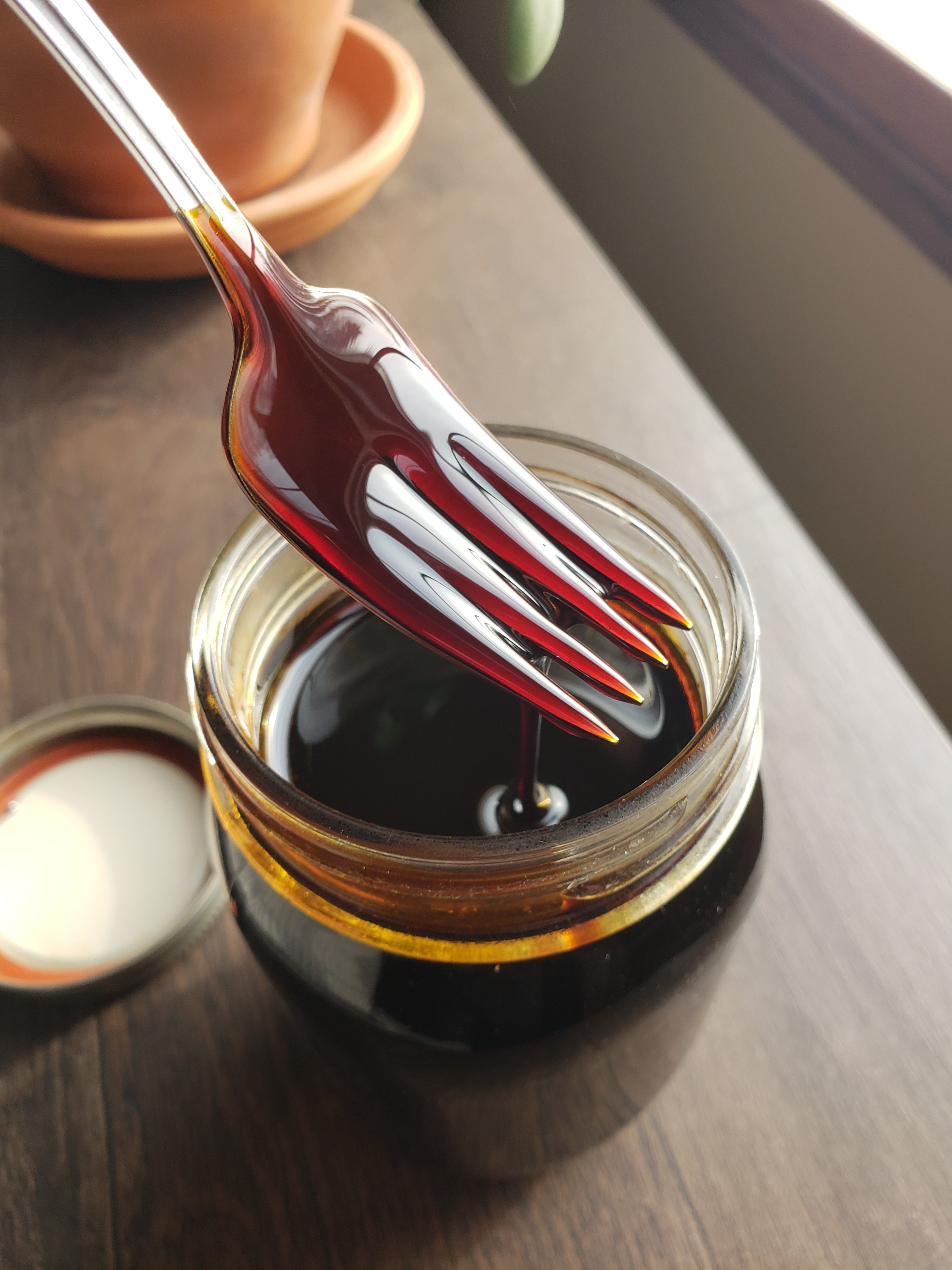
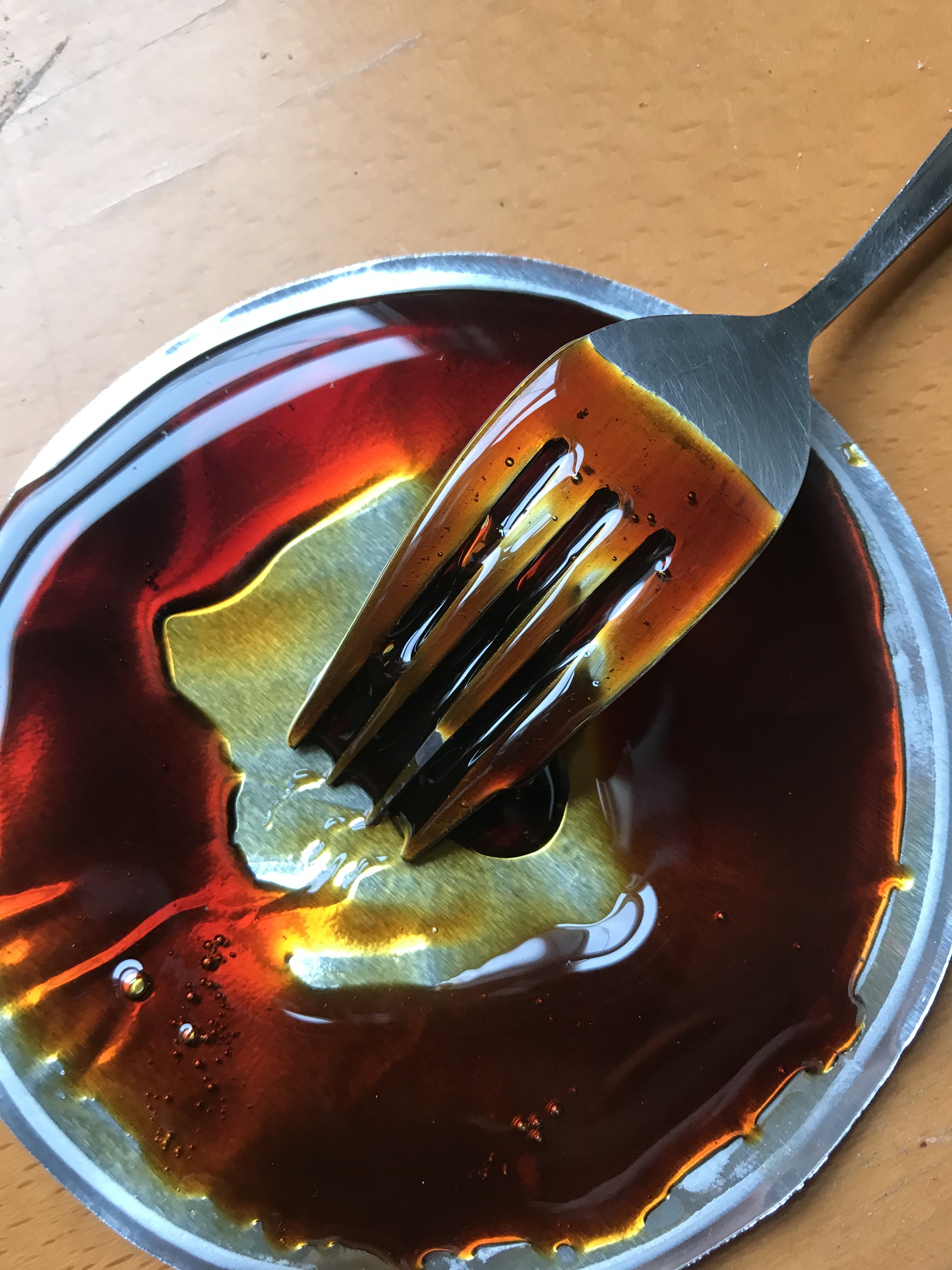
Results of my Golden Peomise and invert #3 experiment. Not much in the way of colour contribution.
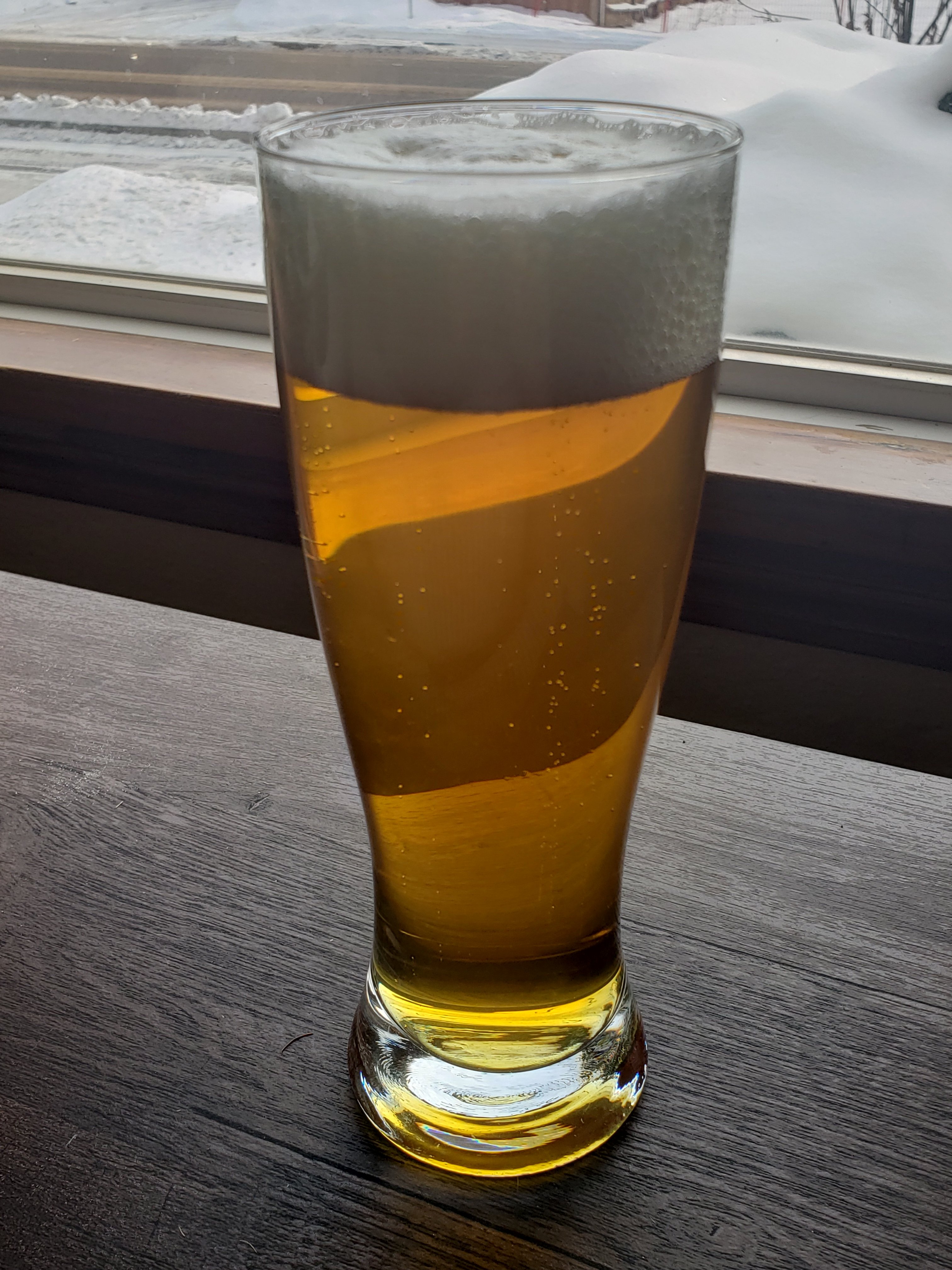
Thanks for starting this awesome thread, rhys333!
I got in on the action today and tried out a pound of Becker's #3 in place of the C-malts in one of my standard milds.
Right away it is obvious that the invert is going to produce a markedly different beer to the standard C120 and Carastan combo that I've used in the past. The #3 invert is bringing the stone fruit flavors that the C120 delivers, but it's much lighter on the pallet and it's mixed with other fruity flavors. I'm eager to get this one into a keg!
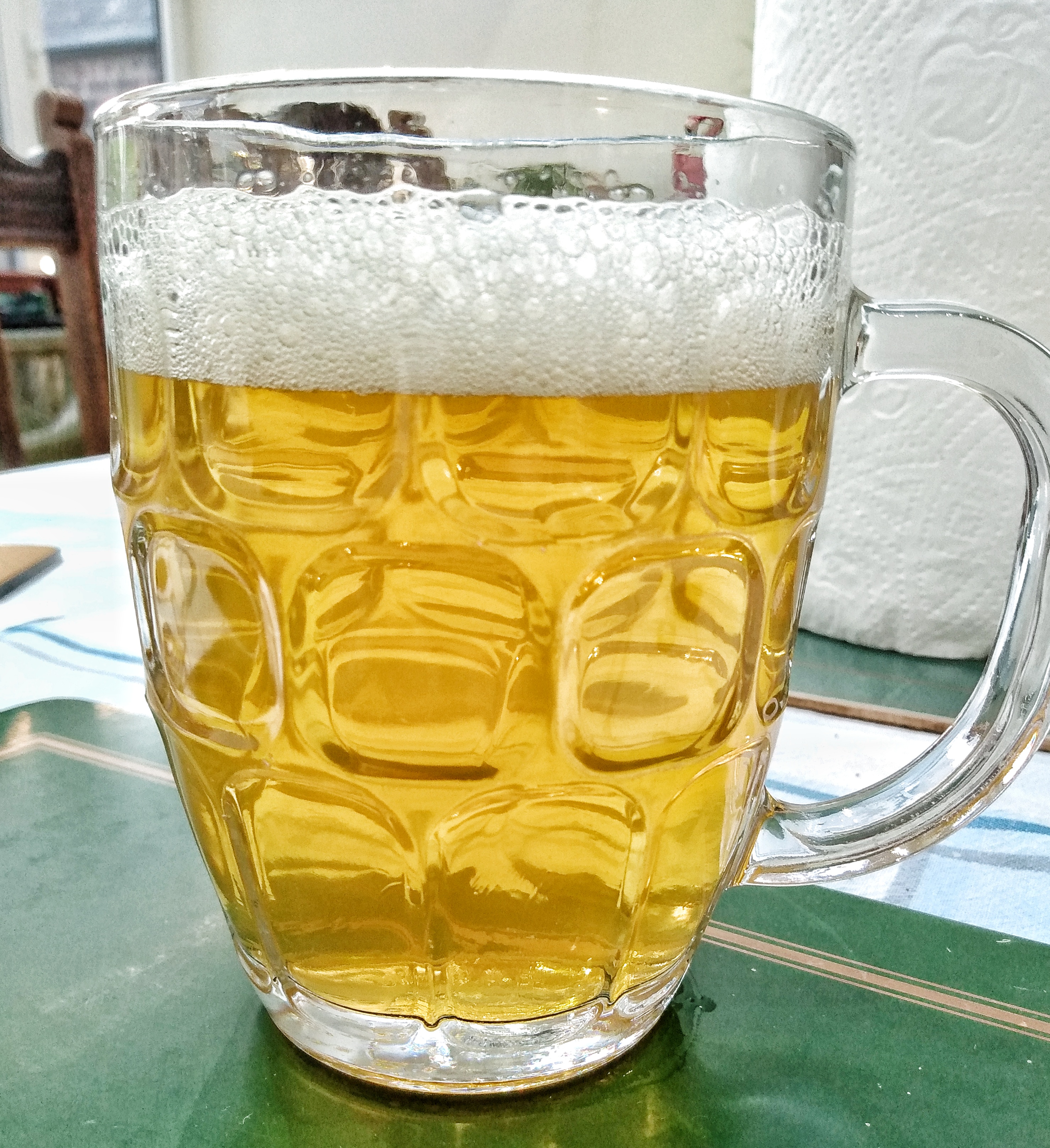
Here is my last deuchars based beer that uses invert, which i see is very similar to @rhys333 recipeView attachment 721157 albeit a fair bit weaker. i unfortunately had to transfer it twice during fermentation due to leaks, all my own fault, and there was a lot of foaming which I think has killed the head. Tastes excellent at least and served its purpose of building up a lot of yeast for a strong stout.
Og 1.042
85% golden promise
10% invert no 2
5% torrified wheat
Slovenian goldings and Willamette, to about 30 ibu and a late hop stand.
Wyeast 1469 yeast, 1 litre shaken not stirred starter.
With a week in the keg, here's my stab at the Invert #3 in a Dark Mild thing that we're doing (among other awesome things. I love this thread!)

This is the second pour, so it's not brilliant, but you're mostly seeing condensation on the glass. I opted to photograph the ale in a pils glass to better demonstrate the color. A photo of a standard UK pint glass didn't yield much information aside from brown-ness. While I'll concede that this ale is certainly on the light end of what AHA thinks a dark mild should be, I like the color and think it honestly represents how the ale drinks. I wouldn't argue if you said it's more of a brown ale. Having had a sip, I'm confident you would say, "Yeah, that's a mild."
As for how it drinks, the Invert #3 is a revelation! Dark mild has always been a tricky target for me. Between Bitter, Southern Brown, Northern Brown, and Brown Porter, it has a lot of neighbors. Making an unambiguously Dark Mild version of Dark Mild can be a bit tricky. A bit too much dark grain and you're in brown porter territory, a bit too sweet and you're in S. Brown territory, a bit too much hops and you can spill into either Bitter or Northern Brown's yards. It's a balancing act, for sure, and a fun challenge. I wonder what our UK-based brothers think of all that AHA balderdash?
Back to the Invert #3 as a revelation thing, based on a pint and half of a small pilsner glass, I'm a full-on convert to the idea that Invert #3 is core to the success of a Dark Mild recipe. The Invert #3 coupled with the Imperial Pub brings all of the dark and light fruit and deeper dark sugar flavors that I previously utilized darker crystal malts to provide. However, and this is where the revelation lives, the Invert #3 has none of the heavy, cloying, plodding attributes that crystal ruins a beer with. This ale is substantial on the tongue (it feels like a 1.055 beer), but it's light on its toes, it's not at all plodding, heavy, and one-dimensional like crystal malt. It finishes dry, but there's lots of stuff still going on after the swallow. Best of all, it's a pint that wants you to drink more. There's a lot of subtle flavors in there, if you keep looking.
I like this beer.
Design for this recipe was simple, I used the Invert #3 as the variable and simply subbed it for the crystal malt additions in a long-established Dark Mild recipe.
OG: 1.041
IBU: 19
est. SRM 15
DC Water w/ 3g Calcium Chloride in the mash, 2g Calcium Chloride pre-boil, 1g Gypsum pre-boil. Mash pH 5.5, after pre-boil mineral additions, pre-boil pH adjusted down to pH 5.2 w/ phosphoric.
76% Otter (Warminster)
11% Corn
1.5% Pale Chocolate (ie 2oz as colorant, but does provide some dark toast if you look for it)
.5% Midnight wheat (ie one once as colorant, in lieu of caramel coloring)
11% Becker's Invert #3 (added at run off, boiled the full duration)
90min boil
13 IBU Fuggles @60 (.75oz for 6gal)
2 IBU EKG and 2IBU Fuggles @20 (.25oz each for 6gal)
1.5 IBU of EKG @10 (.25oz for 6gal)
Imperial Pub, 4th generation pitched at 66F, raised to 68F as soon as the yeast became active, raised to 72F at 1/2 gravity, held for two weeks at 72, kegged, cold-crashed, then fined 24hrs later.
How do you guys treat the invert when it comes to fermentability? I just made a British strong using 8% invert #3 and 6% crystal.
Mashed at 67c wich is not really low but not really high either, fermented with wlp007 and got 78% AA even with a fair amount of sugar, it also leaves taste so it seems some of the invert get left unfermented.
That looks mighty tasty.
I'll keep making my own invert. Beckers is pretty pricey. I saved a bit back for the 1# invert 3 I got just to kinda color match my home attempts.
Ron Pattinson consistently says that invert #3 is the secret. That American milds may look right, but never taste quite right owing to the use of crystal instead of invert.
I've taken a break but I'll soon be ready to re-tackle the Machine House Brewery mild. It uses Bairds C50-60, C120-150, & chocolate. It's the dogs bollocks and definately in my top 10 beers of all time list. When I finally get a clone I'm happy with, I will post it here. When I chatted with the brewer/owner, who is English, he said he doesn't use invert because you can't really get it commercially in the US like one can in the UK. So, he made his take on Dark Mild using crystal, and it is a damn fine beer.